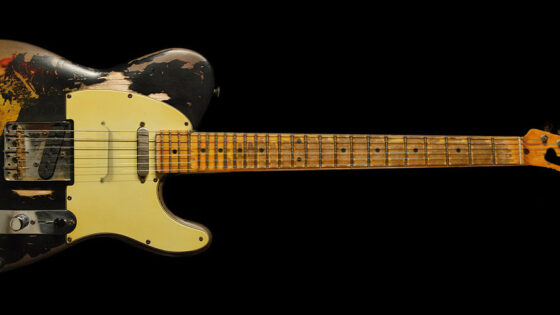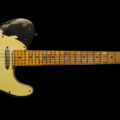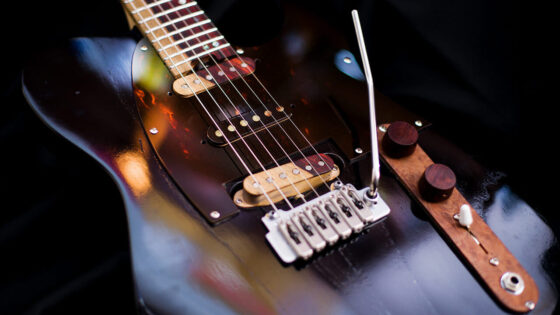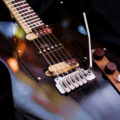Difference in sound between STETSBAR and Tune-O-Matic
- 2017.04.19
- 著者:コラム運営
ストップテールピースのギターに装着できるトレモロユニットSTETSBARの音の違いを簡単に検証します
One of the tremolo unit systems that can be installed on a stop tailpiece guitar without modification is the “STETSBAR”.
It’s great to be able to use the arm even on Gibson-type guitars, but the bridge is supposed to be an important element that determines the sound quality of an electric guitar.
I tried to verify how much the sound changes.
With STETSBAR, there are fewer sparkling high-frequency components, and it resonates more directly with the Tune-O-Matic.
This may be because, due to the bridge structure, the string vibration does not transmit much to the body, resulting in a smaller natural sound and less energy loss, but perhaps as a result, the low-frequency does not decay.
Sustain is not much different between the two.
Refer to the above for the structure of STETSBAR
Design Issues
In the original design of the guitar, in the case of the so-called Gibson-type guitar headstock, the strings have a three-dimensional angle, and especially the 3rd and 4th strings are prone to friction at the nut.
We want to reduce friction by using grease like Nut Sauce, but it inevitably puts more strain than Fender or PRS-type guitars.
Combining a roller nut & locking tuners with a two-point tremolo adjusted on a Stratocaster
→ Tuning hardly goes out of tune even with vigorous arm movement
For an SG+STETSBAR
→ Even with Magnum Lock tuners, tuning tends to go out of tune
Care must be taken when using guitars other than Fender type (Telecaster, etc.) or not using a locking nut.
Postscript
Stability may be achieved by using a roller nut or The String Butler.
Please give it a try.
考察
エレクトリックギターではボディやネックの振動をピックアップが拾うことはありませんが、これらの箇所でエネルギーをロスさせる事も重要な要素でありそうです。
アコースティック楽器では生音を評価しリファレンスを行いますが、電気楽器では出力される電気信号をどのように作るかが重要と言えそうです。





